Content [show]
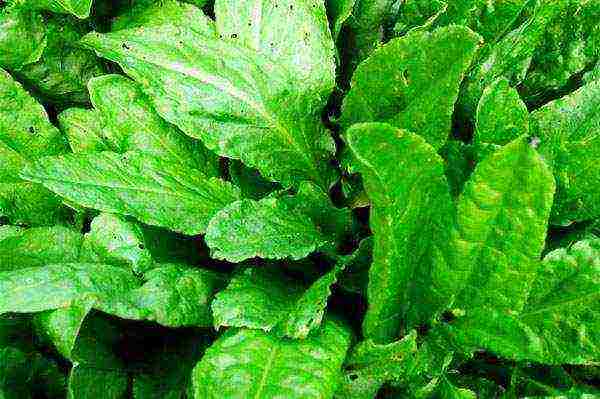 Sorrel is an unpretentious summer cottage plant, which contains many vitamins and minerals that a person needs. So that you can be sure what a bountiful harvest sorrel can give, planting and caring for it in the open field must be timely and correct. However, the plant takes root well in the wild.
Sorrel is an unpretentious summer cottage plant, which contains many vitamins and minerals that a person needs. So that you can be sure what a bountiful harvest sorrel can give, planting and caring for it in the open field must be timely and correct. However, the plant takes root well in the wild.
Choosing a place for planting sorrel
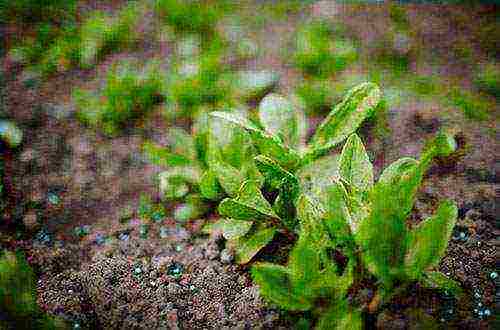 Unlike many ornamental and horticultural crops, sorrel does not like open sunny areas. The best place is partial shade from trees. The acidity of the soil practically does not matter, sorrel gives a good yield both on neutral substrates and on acidic ones, it only prefers loamy soils.
Unlike many ornamental and horticultural crops, sorrel does not like open sunny areas. The best place is partial shade from trees. The acidity of the soil practically does not matter, sorrel gives a good yield both on neutral substrates and on acidic ones, it only prefers loamy soils.
Crop rotation for annual planting gives excellent results - plant sorrel where other greens, onions or pumpkin plants used to grow.
It is better to decide on the future sowing site in the fall in order to prepare the site in advance. It is necessary to dig up the bed and remove the weeds, and add compost and ash to the soil as organic fertilizer. Top dressing for planting sorrel in open ground is nitrogen fertilizers added to the soil 1-2 weeks before sowing. Immediately before sowing, the bed is re-loosened and leveled.
You should not take up a lot of space for sorrel - 1-2 square meters of beds are enough for a family.
When to sow sorrel outdoors: in spring, summer or autumn?
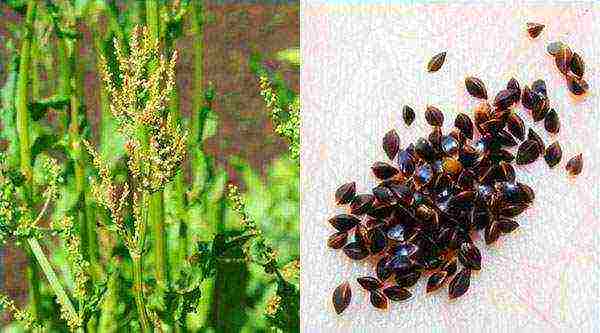 Depending on when you want to get the crop, the sowing time is selected:
Depending on when you want to get the crop, the sowing time is selected:
- So that the harvest can be harvested by autumn, sorrel is planted in early spring, as soon as the snow melts and the threat of the last frost subsides.
- The second suitable time for sowing sorrel is from late June to early July, as soon as the early vegetable plantings are harvested (winter garlic and onions, lettuce or radish). In this case, the sorrel will take root in the garden by the fall and will well endure wintering. The main condition for caring for sorrel planted in summer is frequent watering.
- Planting and caring for sorrel in the open field in the fall (in October-November) is carried out in order to prevent the seeds from germinating by winter and remain in the soil until spring. So already in the spring and summer of next year, you can get a bountiful harvest. This method is suitable for growing sorrel in a temperate strip on sandy soils.
Sorrel care secrets
 After the planting has passed, caring for sorrel in the open field consists in periodic watering and weeding of the site. A bed with young shoots is mulched and fertilized with mullein three times (in proportions with water 1: 6). For best results, you can add purchased phosphate or potash supplements.
After the planting has passed, caring for sorrel in the open field consists in periodic watering and weeding of the site. A bed with young shoots is mulched and fertilized with mullein three times (in proportions with water 1: 6). For best results, you can add purchased phosphate or potash supplements.
 So that the sorrel does not bloom ahead of time, and all the strength of the plant was spent on feeding the succulent leaves, and not on the flower outlet, it is necessary to regularly water the garden bed. On hot days, you need to especially monitor this, since the peduncles develop rapidly, and the quality of the leaves may deteriorate. If flower rosettes have already appeared, they need to be removed.
So that the sorrel does not bloom ahead of time, and all the strength of the plant was spent on feeding the succulent leaves, and not on the flower outlet, it is necessary to regularly water the garden bed. On hot days, you need to especially monitor this, since the peduncles develop rapidly, and the quality of the leaves may deteriorate. If flower rosettes have already appeared, they need to be removed.
 Before wintering, cut off the remaining leaves and mulch the soil, adding humus or compost to the aisles.
Before wintering, cut off the remaining leaves and mulch the soil, adding humus or compost to the aisles.
In the same place, sorrel grows well for 3-4 years, then the yield deteriorates sharply.
You can cut off adult leaves 4-5 times per summer. It is advisable to do this in the morning, after weeding the garden bed. After harvesting, it is necessary to loosen the aisles and lightly water the garden bed.
Sorrel in the open field: diseases and pests
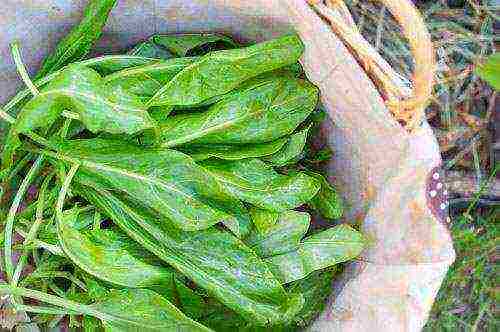 In order not to lose the crop, you need to know what pests can infect sorrel, and how to deal with them:
In order not to lose the crop, you need to know what pests can infect sorrel, and how to deal with them:
- Rust. It manifests itself in the form of yellow-brown spots on the leaves with spores visible to the naked eye.
- Sorrel leaf gnaw and sawfly caterpillar. If bugs or larvae are sitting on the leaves, spray the plants with infusion of garlic or nightshade.
- Sorrel aphid. In this case, you can not spray the leaves with store-bought poisons, so as not to be poisoned during harvesting. Try sprinkling ash on the plant, or pouring an infusion of garlic, dandelion, or any other stinging herb on top.
- Downy mildew. It looks like a grayish bloom on the back of the leaves. A drug that is safe for the human body, but destructive for sorrel disease, is phytosporin. Apply it according to the instructions on the package.
With proper planting and caring for sorrel in the open field, pests appear very, very rarely.
 Let's summarize:
Let's summarize:
- For sorrel, it is worth choosing partial shade under the trees, but not a low wetland. The soil is suitable for any acidity, preferably loamy.
- Before planting, the site is mulched, ash and humus are added.
- To keep the leaves juicy throughout the summer, the sorrel is watered regularly and the emerging flower stalks are regularly pruned.
- After planting, caring for sorrel in the open field - weeding, feeding and watering.
- Infusions of burning herbs will help from pests, but not store-bought ones.
All about sowing sorrel - video
Sorrel (Rumex) is a perennial herb. It has been cultivated since the Middle Ages, in Russia for a long time it was considered an ordinary weed, therefore, it began to be grown as a garden crop in recent centuries. The root system of the plant is pivotal, the fleshy root penetrates deeply into the soil. The leaf plates are large, long, gathering in a dense basal rosette.
Sorrel is one of the earliest vegetable crops, a breath of freshness after a long winter cold, a storehouse of useful elements. Green leaves reach for the sun as soon as the snow melts. In May, the first harvest can already be harvested - the length of the leaves reaches about 10 cm. During the season (harvesting should be completed in July), 4-5 cuts are carried out with an interval of 10-15 days. Then the leaves become coarse, the concentration of oxalic acid becomes high, which is not very useful for humans.
When to sow sorrel outdoors
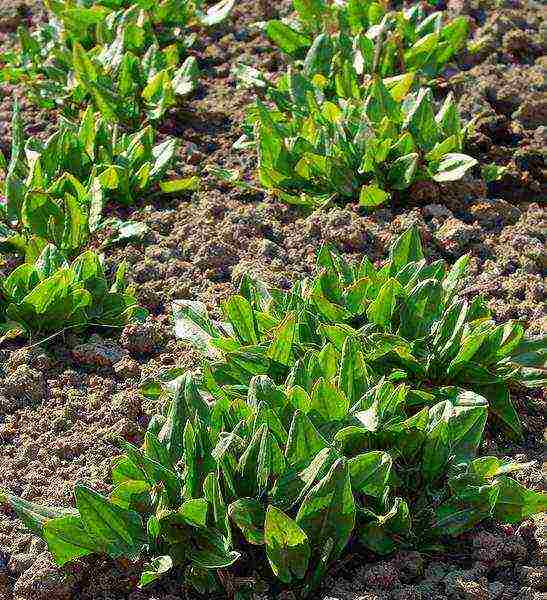
When to plant sorrel in spring and before winter sowing dates
The plant is cold-resistant, its seeds begin to germinate at +3 ° C: growing seedlings is not required, you can immediately sow in open ground. When to plant sorrel?
There are three optimal sowing dates:
- Early spring - Sow as soon as possible to till the soil. Get the harvest in the same season.
- Summer sowing - Carry it out after harvesting early-ripening vegetables (June). Sorrel will have time to root well before the onset of the winter cold
- Sowing before winter late autumn (late October-early November) - wait for severe cold weather with night frosts and dry weather, as the seeds should not have time to germinate before winter. When sowing in winter, it is useful to fill the rows with high-quality humus, mixed in half with garden soil.
In the latter two cases, sorrel will delight you with the first green harvest next spring.
It is best to sow sorrel in the spring when the soil is saturated with moisture. With summer sowing, regular abundant watering of the garden will be required.
Why the sorrel does not sprout
Often people make a gross mistake: they sow sorrel deeply, which is why the seeds do not break through a thick layer of earth. Sorrel seeds are very small, sow them no deeper than 1 cm. To do this, make the furrows "symbolic", only slightly indicating the direction of sowing with a hoe corner. After sowing, carefully cover the furrows with soil.
What variety of sorrel is best to plant?
The best sorrel variety is large-leaved, the yield is excellent, it easily tolerates cutting and grows quickly under the condition of regular watering. It does not degenerate for a long time and does not freeze.
Site selection
The plant thrives in moderate shade conditions.
The soil needs fertile, sufficiently moist, but without stagnation of water. The optimal occurrence of groundwater is at a depth of more than 1 m. It grows best on loamy and sandy loam soils rich in humus. A slightly acidic soil reaction is preferred.
How to plant sorrel seeds outdoors
1 g of weight contains about 1000-1 500 seeds. Seeds germinate for about 2 years.
Soil preparation
Dig up the area, free it from weeds. On depleted soils for digging, apply fertilizers: 6-8 kg of humus or compost, 20-30 g of superphosphate and 15-20 g of potassium chloride per 1 m².
How to prepare a bed for planting sorrel, look at the video:
How to plant sorrel seeds
- Sow in rows, keeping a distance of 15-20 cm between them.
- In the spring, plant the seeds to a depth of 8 mm-1 cm. Amicable shoots will appear in 8-11 days, and if the crops are covered with foil, they will appear in 3-5 days. After a week of growth, thin out, leaving a distance of 5-7 cm between the plants.
- When sowing in summer, the soil must be saturated with moisture - a couple of days before sowing, water the bed well so that the soil is well wet.
- When sowing before winter, the bed is prepared in advance so that the soil settles and the seeds are not washed away by precipitation into the deep layers of the soil.
It is necessary to sow as little as possible, the germination of seeds is excellent, and after germination of seeds, the seedlings must be thinned out so that the plants do not clog each other. Ideally, leave at least 2-3 cm between individual plants so that the sorrel is large and beautiful.
How to sow sorrel, look at the video:
Care and cultivation of sorrel in the open field
How to grow sorrel outdoors:
Watering
- Water regularly and abundantly during active growth.
- In hot weather and dry soil, the ground part will actively develop, which will provoke earlier unwanted flowering (under normal conditions, it should occur in the second year of growth).
To maintain the quality of green products, the stalks should be removed.
Top dressing and mulching
- In early spring, loosen the soil, mulch the area to maintain the moisture level, add top dressing (1 bucket of mullein solution in a ratio of 1 to 6 with the addition of 10-25 g of potassium-phosphorus fertilizers per 1 m²).
- To maintain the yield, after each leaf cut, you should feed it with a complex of mineral fertilizers, focusing on the nitrogen component.
- In autumn, add 4-5 kg of humus or compost to the aisles.
Sorrel should be cultivated in one place for no more than 4 years, then the planting must be renewed.
Sorrel diseases and pests
Downy mildew is a possible disease of the sorrel culture. This will not happen if the seeds have been processed prior to planting.
The sorrel beetle can destroy your crops. Spray the plant with a solution of garlic, sprinkle with ash or tobacco dust.
The benefits of sorrel
Sorrel is rich in minerals (potassium, iron), proteins, sugars, organic acids (oxalic, malic, citric), contains vitamin C and carotene.In folk medicine, sorrel is used as a choleretic, hemostatic agent, the juice of the plant has an antiseptic effect, improves metabolism, and normalizes the stomach. Do not abuse it, as acids can have a negative effect on the kidneys.
Fresh sorrel leaves are used in the preparation of salads, sauces, mashed potatoes, everyone's favorite "green borscht", it retains its useful properties both fresh and canned.
Many summer residents are interested in such a plant as sorrel. Growing this culture will not cause much trouble - it is quite easy to get an excellent harvest of greens with a pleasant sour taste. Sorrel usually appears in early spring, sprouting from under the snow. Thus, these greens are the first and main supplier of essential vitamins for the body. That is why people used to look for sorrel in forests and fields. But now the majority prefers to plant this crop on their site and get the harvest without much difficulty.
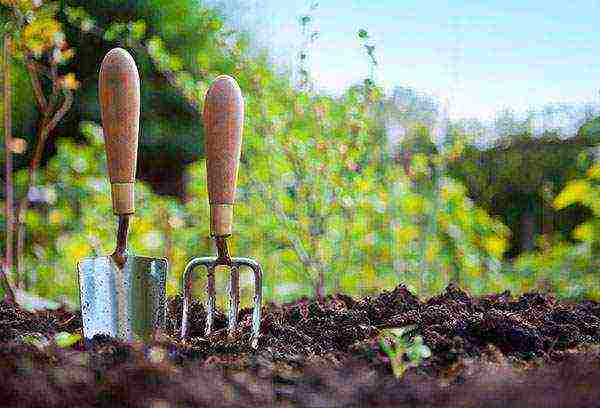
Plot processing
To get a good harvest, you need to carefully prepare the soil for planting. It is advisable to choose a place in the shade, under the crowns of trees. You can also use tall bushes for this - currants, cherries or raspberries. The greens are not very picky about the composition of the soil, but still you should not plant sorrel in swampy lowlands. The places where onions or pumpkin used to grow are best suited. But if this cannot be done, it's okay, you can choose any other area on your site.
Mechanical processing of soil for sorrel is carried out in the fall. The earth is dug up and the weeds are removed. It is imperative to do this, as some weeds can prevent the sorrel from growing. When digging, the soil should be fertilized with humus and wood ash. After that, the land is carefully loosened and laid in a low bed. It is worth noting that for growing greenery, you do not need to prepare a large plot, two square meters will be enough.
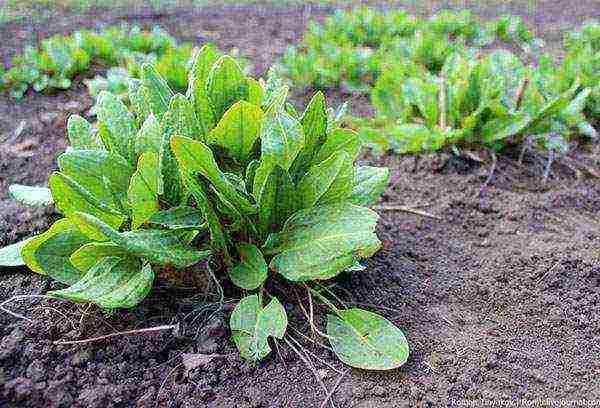
Varieties
Only experienced gardeners know that sorrel can be of different varieties. Most of them are common weeds, but there are also those species that are of considerable benefit.
- Large-leaved. This variety is the earliest. It tolerates low temperatures well and is frost resistant. Its leaves are light green, a very beautiful color.
- Belgian. Sorrel easily tolerates frost. The leaves do not have a pronounced taste, although it is very pleasant and very slightly sour. The size of the leaves is small - up to 15 centimeters in length.
- Malachite. It matures long enough. To harvest, you need to wait about 50 days. The leaves are slightly sweet and slightly sour.
- Spinach. This sorrel has very wide leaves that contain incredible amounts of vitamin C.

How to plant sorrel?
Since sorrel is frost-resistant, it can be planted early enough. Thus, you will be harvesting throughout the summer cottage season - from summer to autumn. Some summer residents also practice winter planting of greenery before the very first frosts, so that the seeds do not germinate until spring.
For all cases, there is a general procedure that must be strictly followed if you want to get a decent harvest.
- The furrows in the bed are made about 1.5 centimeters deep. The distance between them should be at least 20 centimeters, ideally 25. This is necessary so that the greenery has free space for growth.
- Seeds are planted at a short distance from each other - 5-7 centimeters. After that, the furrows are covered with earth. By the way, seeds can be planted both dry and pre-soaked.
- If you need to accelerate the germination of sorrel, then the beds should be covered with plastic wrap. In this case, you will be able to see the first shoots within 5-7 days. If the film is not used, the greens will sprout in about 2 weeks.
Advice
If you are afraid that the greens will not germinate well, then soak the seeds in water for two days. The water needs to be changed a couple of times during the soaking process.
It is important to consider that when sowing greenery before winter, you should not count on a very good harvest. However, this option also takes place. Planting sorrel in October-November is appropriate if you live in a temperate climate. For residents of Siberia, this option will not be very convenient.
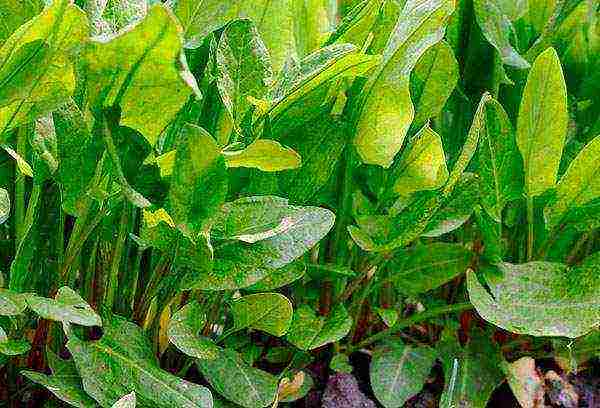
Care features
Sorrel does not require special conditions of detention, as it is unpretentious. However, some of the nuances are still worth considering.
- The sorrel should be watered abundantly. The soil under the sprouts should always be moist, in no case let it dry out, if you do not want the greens to release flower stalks too early.
- It is advisable to regularly loosen and weed the soil between the rows. This will allow the water to stay in the soil longer.
- Sorrel is very fond of various dressings and responds well to them. In the spring, mineral fertilizers must be added to the soil. After you massively cut the leaves, you need to feed the soil with mullein infusion - this will help the greens to recover as quickly as possible.
- Leaves must be cut off completely before winter. This is done to provide oxygen to the roots.
- Keep in mind that various pests such as aphids and caterpillars are very fond of sorrel and can seriously damage your crop. That is why greens need to be processed. This can be done with various folk remedies, as well as products from stores. Here it should be borne in mind that any treatments are carried out only after the harvest.
- Rust is very dangerous for sorrel. Because of it, yellow spots may appear on the leaves. You will need to fight infections with copper medications. Some of them can be used even on the day when you plan to cut the leaves. Beforehand, you should carefully study the instructions.
If you take proper care of the greens, then it will delight you for at least 4 seasons. However, there is one condition here - the sorrel must be transferred to a new place every three years, only in this case a good harvest can be expected.
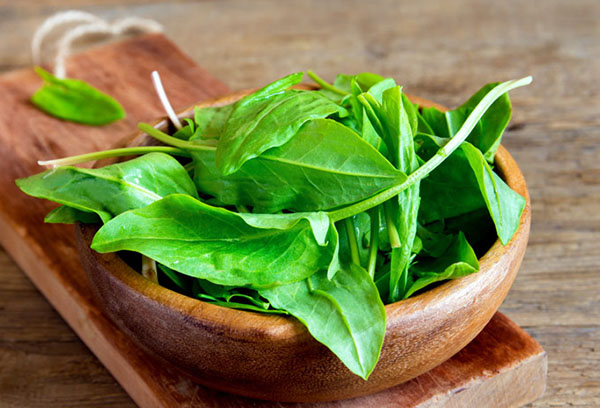
Collection
You know all about planting and caring for sorrel. Now it is worth learning about how to harvest the crop correctly, because it depends on whether it will grow next year. Plus, given some rules, you can end up with incredibly tasty greens.
- It is best to cut the leaves in the early morning or, conversely, in the late evening. This approach will allow you to get the most juicy and tasty sorrel.
- Harvest from the very edges. The leaves are cut with a knife. You can do it with your hands.
- Do not pull the leaves under any circumstances - you will either simply tear off only the edge of the leaf, or you will rip the bush together with the roots from the ground. If the roots are damaged, then the plant is unlikely to be able to take root.
- Harvesting should be stopped about one month before the onset of the first frost. This is necessary so that the plant has time to get stronger before the cold weather.
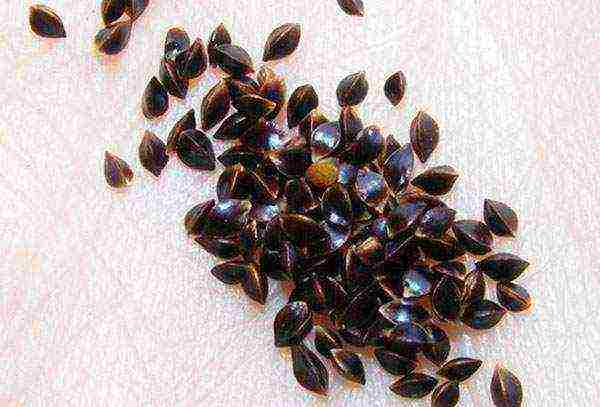
If you want to get your own seeds for future crops, you should leave a couple of bushes without harvesting them. Then they will be able to bloom and give a small amount of seeds. Unlike those sold in the store, they will be of very high quality. Flowering will begin in mid-May, but you need to remove the seeds only in July, when the inflorescences are already brown. The bundles are removed and dried for about 10 days. After drying, the seeds can be exfoliated and bagged until spring. You can plant them even after three years, germination will still be preserved.
So, growing sorrel is not a difficult and time-consuming procedure. Even with the wrong care, you can get a good harvest. If you pay a little attention to the greenery, the result will be amazing.
On your own summer cottage, you can grow a huge number of plants.One of the most popular and favorite among summer residents is sorrel. He is unpretentious and has a fast growth. Sorrel is very easy to breed and easy to care for. It can be grown by a summer resident who does not have experience in performing agricultural work. But there are still secrets to successfully growing a plant that allow you to get especially generous yields. 
Historical facts
Sorrel came to our country from Europe. It is these regions that are the birthplace of the plant. It is grown as a cultivated plant, occupying vast areas in the steppes and forests. More than 200 species of sorrel are known today.
Sorrel was first mentioned in the chronicles of the 12th century. In Russia, for many decades in a row, the plant was classified as a weed and tried in every possible way to exterminate it from cultivated areas. And only in the last century did sorrel take its rightful place in vegetable gardens. It began to be eaten raw and cooked.
Sorrel not only has a peculiar sour taste, but is also useful for humans. It contains acids that have a beneficial effect on the body:
- lemon;
- ascorbic;
- sorrel;
- apple.
That is why professionals recommend taking at least a small plot in the country and growing this amazing culture on your own. So how to grow sorrel from seeds so that it delivers a minimum of hassle and a maximum yield? 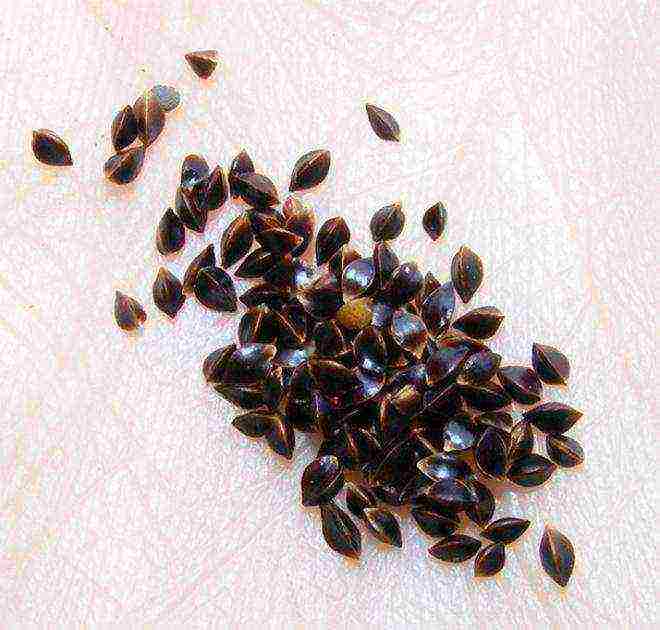
Plant features
Sorrel, which has been successfully grown from its seed, is a perennial plant that can enjoy a sour taste all year round. He is not afraid of low temperatures. Sorrel emerges with the appearance of the first rays of the sun, and already in mid-May it is able to give the first full harvest: leaves up to 10 cm long are simply cut off and used at individual discretion. After 15 days, the plant grows back completely. The last harvesting period is the middle of summer: until that time, the plant will accumulate a lot of acid, acquire coarseness. Culture becomes tasteless, and it is undesirable to eat it.
Use of sorrel
Young sorrel leaves have an increased concentration of citric and malic acid, contain vitamin C, potassium, iron and other useful components. That is why sorrel is recommended to be consumed raw. But many chefs use it in food preparation as well. Green borscht, filling for pies and pies, green mashed potatoes or an element of salads - sorrel can be used everywhere. In addition, many canned sorrel, because it is able to retain its beneficial properties even during heat treatment.
Sorrel is also used in medicine. It is used as a choleretic and hemostatic agent. 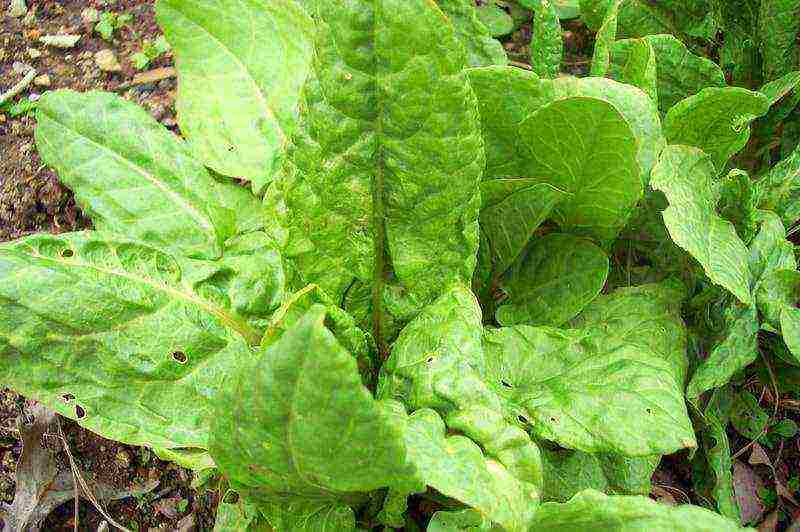
Sorrel planting and care in the open field
Growing sorrel
Before sowing sorrel in the country, you need to find a place for its growth. The plant can stay in one place for 4 years, after which a culture transplant is necessary. The acidic wanderer needs to provide a moist area, without stagnant water. Sorrel prefers a clean bed. He is especially painful in the neighborhood of wheatgrass. The ideal soil for growing a plant is considered to be loam, generously fertilized with organic components. Sorrel will also be grateful for the peat soil with drainage.
Garden bed preparation
Professional summer residents advise taking care of the soil for planting sorrel in advance. They prepare the landing site in the fall: they dig up a garden bed, apply fertilizers. For 1 m2 of area, it is recommended to add 6 kg of rotted manure, 30 g of potassium chloride, 30 g of superphosphate.
In the spring, the dug-up planting site is fluffed and the following nutrients are introduced into the soil:
- 2 g ammonium nitrate;
- 2 g of potassium salt;
- 4 g superphosphate;
- 40 g of urea;
- 3 kg of rotted manure.
The components should be mixed until a homogeneous composition is obtained and added to the garden. 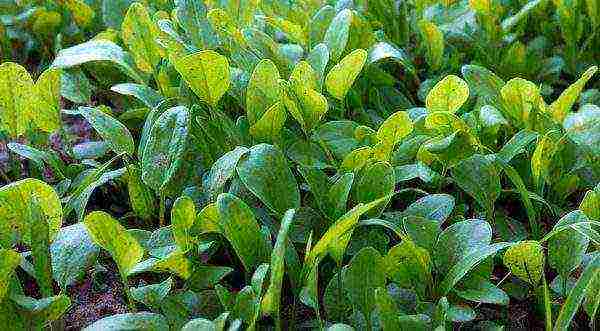
Planting time
The exact timing of planting sorrel is determined by individual needs. The plant can be planted both in spring and summer.With late sowing of seeds, it should be borne in mind that the culture must have time to take root before the onset of frost.
Sorrel needs up to 1.5 months for full development. The time of planting a plant in summer should be calculated using this feature.
Naturally, the plant develops best when it is planted in spring. During this period, the soil is not yet overdried and the moisture-loving plant can develop well. In the summer, it is necessary to provide the culture with timely watering.
Seed preparation for sowing
It is recommended to prepare sorrel seeds for sowing. If there is no time for preparatory procedures, you can sow the plant dry. It is worth remembering that dry, unprepared seeds give uneven shoots.
In order to accelerate and increase the germination of the seed, it is necessary to soak it in water for 2 days: the seeds are poured into cheesecloth, tied and lowered into a container with water. You can increase the resistance of the plant, get even faster and stronger shoots if you soak the seeds in water with the addition of fertilizers. You can buy useful products in a specialized store. 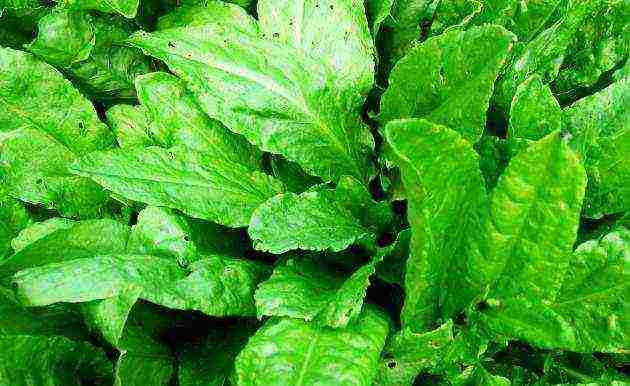
Sowing sorrel
Standard sowing technology:
- the row spacing must be at least 20 cm;
- the distance between individuals is at least 5 cm;
- sowing depth - 1.5 cm.
In the event that the soil is not moist enough, it must be watered before planting the plant. This is especially important when sowing seeds in summer. The seed is spread out into pre-made rows, carefully sprinkled with soil. The first shoots appear within 15 days. You can speed up the germination process by covering the film with plastic wrap. A kind of greenhouse will speed up the process: the sorrel will rise already on the 5th day.
Slightly strengthened crops are thinned out, increasing the distance between plants to 10 cm. A sufficient amount of space allows you to form a strong bush and after 2 months you can start harvesting.
For summer sowing, the ideal time is the end of June - July. Until autumn, the sorrel will have time to take root and form a full-fledged rosette, it will be ready before wintering.
You can sow sorrel in the middle of autumn. It is very important that the seeds do not sprout. In the spring, as soon as the snow melts, the seed will show itself. But, unfortunately, the autumn planting does not give full-fledged shoots, so it is unlikely that it will be possible to collect a generous spring harvest. 
Crop care
Sorrel is picky about the moisture content of the soil on which it grows. In dry weather with temperatures above 26 degrees, its delicate rosette stops developing. Also, exposure to hot climates leads to flowering of the plant. In turn, the presence of a peduncle reduces the quantitative and qualitative indicators of yield. To prevent this, it is necessary:
- provide the plant with timely abundant watering, especially in summer;
- cut off the appeared peduncles as early as possible.
In the spring, immediately after the emergence of seedlings, the soil is loosened and mulched. Fertilize the plant with a solution: add 25 g of phosphorus and potassium preparation to 10 liters of water. In autumn, organic fertilization is recommended: add 5 kg of compost per m2.
In the second and subsequent years of growth, 20 g of urea, 20 g of potassium chloride, 30 g of superphosphate are added to the garden bed under the sorrel. Sorrel, successful cultivation and easy care of which, gratefully responds to the introduction of mineral and organic fertilizers. But remember, overfeeding the plant is much worse than not feeding it. Use fertilizers in dosage, following the instructions. 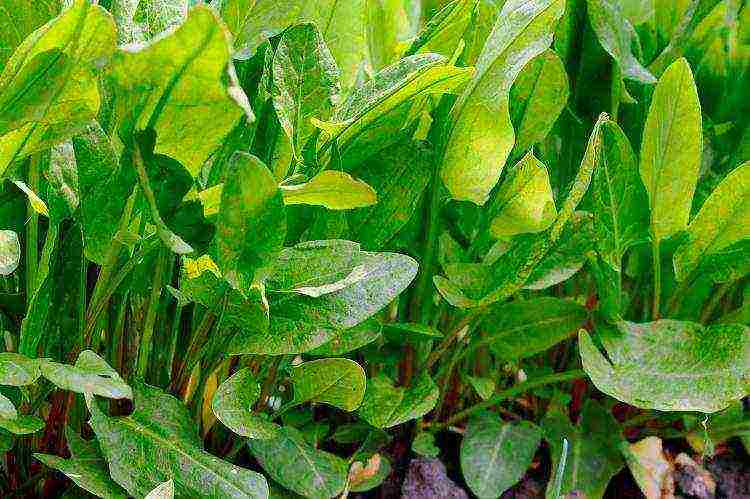
An alternative to outdoor cultivation
Sorrel can be grown not only outdoors. With proper care, it feels great on the windowsill. Especially the plant in the apartment is in demand in the winter, when juicy greens bring unearthly pleasure, saturates the body with vitamins.
In order to expel sour greens indoors, it is necessary to take a developed rhizome with a large number of growth points.The root of a 2 year old plant is ideal: it is young and fully formed.
An acceptable growing site is the southern windowsill. But at the same time, the sorrel feels good on the northern side. If it is not possible to settle a plant on the south side, plant it on any windowsill, arrange artificial lighting and enjoy the fresh greenery. The European guest does not need warmth. It is enough for him to provide a temperature of 5 to 20 degrees Celsius. If the apartment has a glazed balcony that does not freeze in severe frosts, set up a mini-garden there.
Rhizomes are planted in prepared containers and left in a warm place for germination.
To plant sorrel in a flowerpot or wooden box, you need loamy nutrient soil. When using soil from a summer cottage, it is necessary to fry it in the oven for 60 minutes. The procedure will get rid of possible pests and infections. You can also use purchased land for planting rhizomes.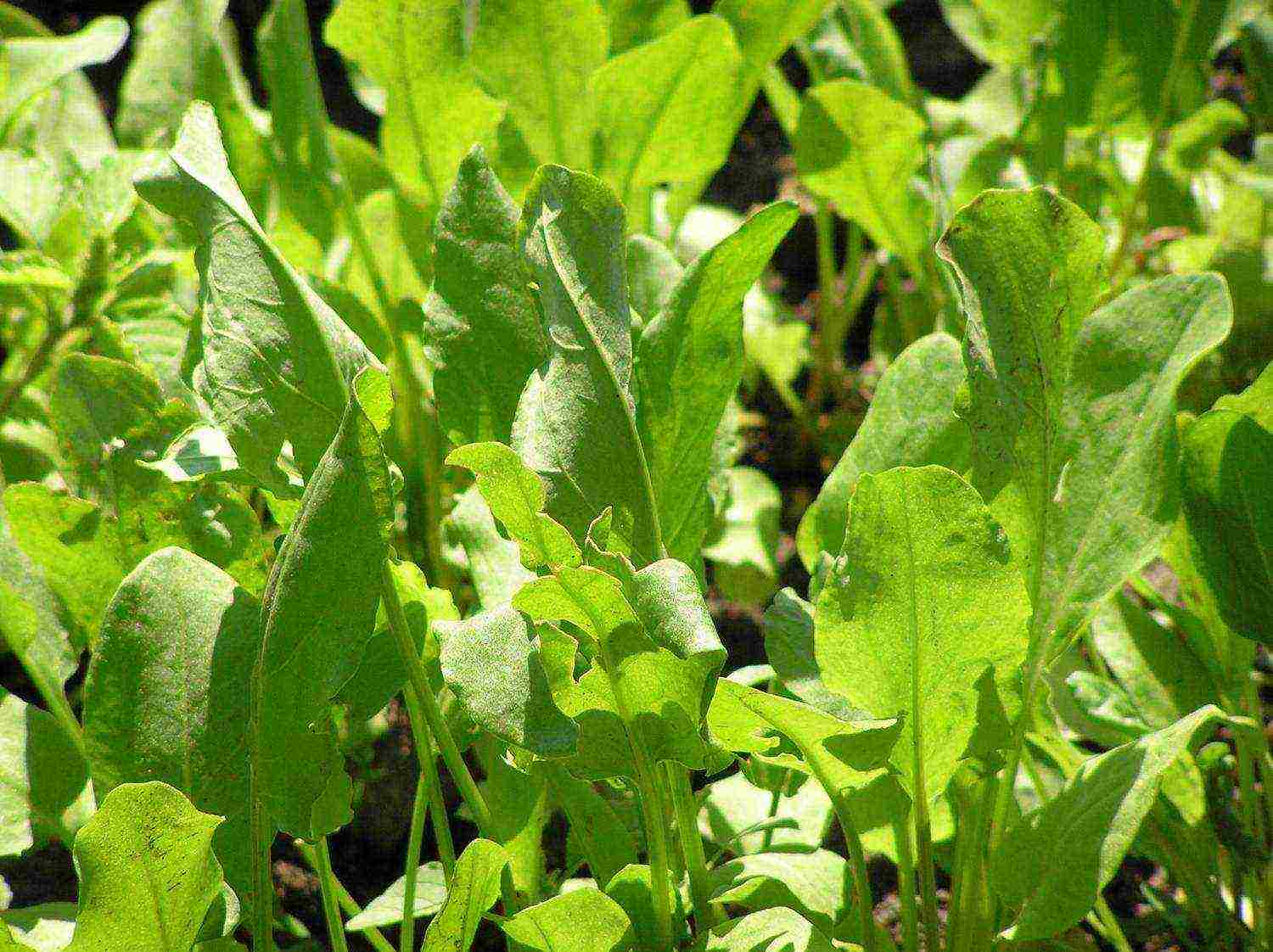 Sorrel on the windowsill can also be grown by seed. For this:
Sorrel on the windowsill can also be grown by seed. For this:
- prepare a sowing container. Ideally, it will have drainage holes for the drain of excess water;
- fill the bottom with drainage material: you can use broken brick, expanded clay or pieces of foam;
- pour the prepared soil into the pot;
- form mini-rows up to 1 cm deep: the distance between them must be at least 7 cm;
- fill in seeds: ideally, if they are prepared in the same way as for sowing in open ground;
- carefully fill the rows, slightly compact the soil;
- water the crops;
- form a mini greenhouse using film or glass.
Sow seeds monthly in small bowls: you will have fresh herbs all year round.
After emergence, crops should be thinned out. The distance between the plants should be up to 4 cm. Water the plant in time, loosen the soil in the flowerpot with a toothpick, apply universal fertilizer for indoor flowers - and you will get a generous harvest of a sour guest.
Settle sorrel in your summer cottage or windowsill in your apartment, and it will thank you with a decent harvest.

